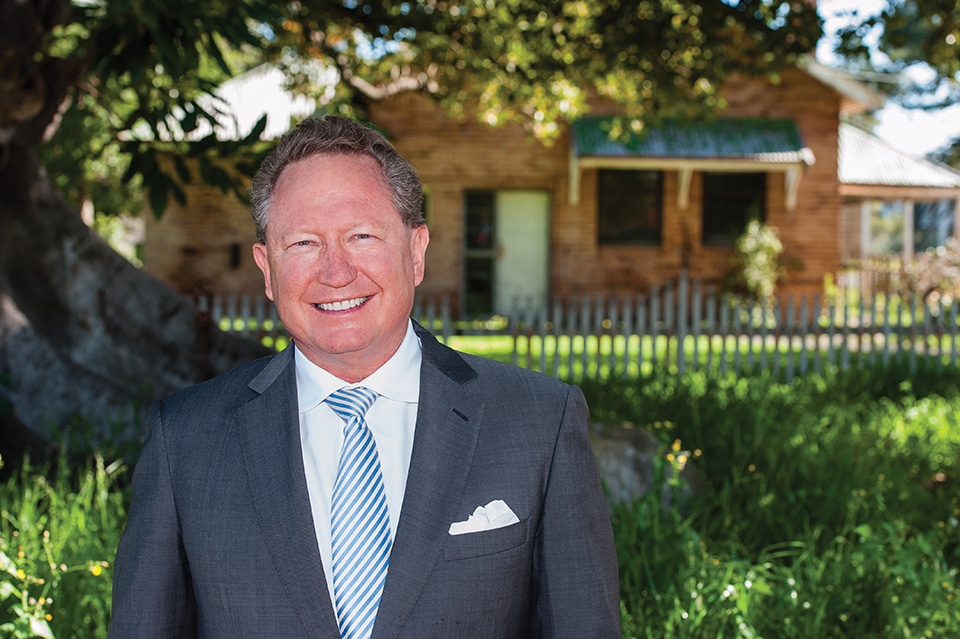Fortescue Metals Group (FMG) and South Korean steelmaker Posco have agreed to a partnership that will see FMG supply Posco with iron ore and green hydrogen.
At a meeting in Seoul on Dec. 14, Posco CEO Jeong-Woo Choi and FMG Chairman Andrew “Twiggy” Forrest discussed the potential of a cooperative green hydrogen business. FMG has already set a carbon neutrality target of 2040. But Forrest and his executives have been jet setting around the world in recent months securing deals, such as this one with Posco, in support of its ambitious plans to build one of the biggest renewable energy portfolios in the world, delivering more than 235 GW of renewable capacit. That is five times the current capacity of Australia’s National Energy Market.
“FMG is a long-term contract supplier that has been stably supplying iron ore to Posco,” said Choi. “If competitive green hydrogen can be produced with cooperation between the two companies and is introduced to Korea, the era of green hydrogen in Korea will be accelerated.”
Part of the deal will see FMG use Posco’s premium steel materials, PosMAC, for all the solar and wind generation behind the green hydrogen FMG produces. As it stands then, Posco will import FMG’s iron ore to make the steel. The steel will then be supplied back to FMG’s solar developments to generate green hydrogen in Western Australia.
Posco has set itself a carbon neutrality goal of 2050, a target which the company is establishing a green hydrogen business to tackle.
“Green hydrogen and ammonia are important factors in reducing carbon emissions as the world is in the transition to clean energy,” said Forrest. “I hope that with Posco’s participation in the first green hydrogen project conducted by FMG, both companies can grow together.”
The partnership with Posco is one of many deals Forrest and his executives have secured in recent months. Forrest himself has been putting serious miles on the engine of the FMG private jet in a world tour to set the stage for the company’s renewable energy business, Fortescue Future Industries (FFI).
According to the The Sydney Morning Herald, Forrest returned to Western Australia last week after “his four-month mystery world tour.” After undertaking a “formal supervised 14-day quarantine period in New South Wales” Forrest received an exemption from the Western Australian government to return to the state without an additional quarantine.
At the FMG annual general meeting in November, it was revealed that Forrest intended to visit up to 47 countries on his search for renewable energy projects and mineral resources for FFI.
Although much of the adventure has been kept secret, it is known that Forrest began his journey in Papua New Guinea and Indonesia, where national leaders signed non-binding agreements with FFI for multibillion dollar renewable projects. Next stop, Afghanistan, then onto Japan where Kawasaki Heavy Industries and Iwatani Corp.n signed a deal with FFI to investigate the potential for a liquid hydrogen supply-chain. Presumably, Forrest’s next stop was to meet with Choi and Posco in Seoul.
It is also believed Forrest or his executives have been on scouting missions throughout Europe, the United States, Ecuador, Colombia, Brazil, the Congo, Kenya, and Ethiopia.
FMG’s share price has more than doubled in the last year, making it Australia’s fourth-biggest listed company. Of course, much of this surge has to do with the rising iron ore price during the Covid-19 pandemic, but it is clear that Forrest himself is not sitting back and enjoying his mining billions. The magnate is on a mission to transform his empire into a global green force.
This content is protected by copyright and may not be reused. If you want to cooperate with us and would like to reuse some of our content, please contact: editors@pv-magazine.com.




4 comments
By submitting this form you agree to pv magazine using your data for the purposes of publishing your comment.
Your personal data will only be disclosed or otherwise transmitted to third parties for the purposes of spam filtering or if this is necessary for technical maintenance of the website. Any other transfer to third parties will not take place unless this is justified on the basis of applicable data protection regulations or if pv magazine is legally obliged to do so.
You may revoke this consent at any time with effect for the future, in which case your personal data will be deleted immediately. Otherwise, your data will be deleted if pv magazine has processed your request or the purpose of data storage is fulfilled.
Further information on data privacy can be found in our Data Protection Policy.